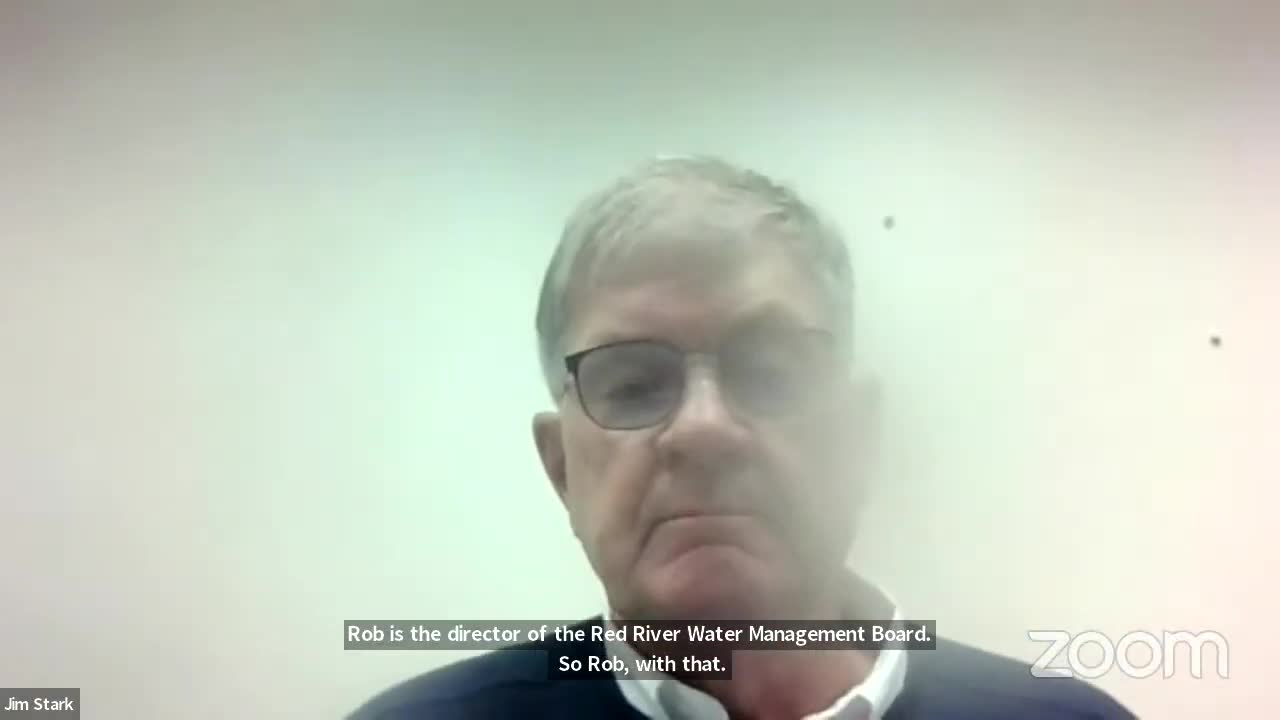Red River water board urges larger, predictable funding and permitting streamlining for flood mitigation projects
October 25, 2024 | Subcommittee on Minnesota Water Policy (SMWP, Departments, Joint, Committees, Legislative, Minnesota
This article was created by AI summarizing key points discussed. AI makes mistakes, so for full details and context, please refer to the video of the full meeting. Please report any errors so we can fix them. Report an error »

Rob Sipp, director of the Red River Water Management Board, told the Subcommittee on Oct. 24 that Minnesota's Flood Hazard Mitigation Program has delivered substantial local benefits but that current funding requests and permitting burdens leave many projects unfunded or delayed.
Sipp reviewed the program history and funding needs: since 1988 the program has allocated roughly $578 million statewide and the program’s average allocation has been about $21 million per bonding appropriation year, he said. He told the committee the program’s current "no‑need" list totals about $139 million (23 projects statewide as of July 2024) and will grow following the 2024 summer flooding events.
"Bonding for the program did not occur in 2016, 2019, 2021, 2022, and 2024," Sipp said, and he described the consequence: some local projects need tens of millions for construction and planning but face limited and unpredictable state funding. He also urged the legislature to consider making the BWSR‑administered Boswell (Bowser) water storage program statewide.
Sipp highlighted permitting and environmental review as a major cost and delay driver for projects: up to 18 permits and approvals at local, state and federal levels can be required; permitting and environmental review costs have reached about $4.4 million (roughly 30% of nonconstruction costs) on some Red River Valley projects. He reported an instance where roughly $800,000 was spent on a project that stalled after a rare wetland was identified late in the process.
Sipp recommended the legislature consider a plan of action for short‑ and long‑term funding of flood hazard mitigation, and to review opportunities to streamline permitting and review processes so projects are not stalled by changing information requirements during review steps.
Ending: Sipp gave a final program tally of expected benefits from planned projects (example totals: about 100,000 acre‑feet of new storage, 15,000 acres of wetland/grassland creation, 75 miles of stream restoration and major annual reductions of suspended sediment and nutrients) and cited FEMA/NIBS estimates that each $1 invested in hazard mitigation returns about $6. No funding decision was taken at the meeting.
Sipp reviewed the program history and funding needs: since 1988 the program has allocated roughly $578 million statewide and the program’s average allocation has been about $21 million per bonding appropriation year, he said. He told the committee the program’s current "no‑need" list totals about $139 million (23 projects statewide as of July 2024) and will grow following the 2024 summer flooding events.
"Bonding for the program did not occur in 2016, 2019, 2021, 2022, and 2024," Sipp said, and he described the consequence: some local projects need tens of millions for construction and planning but face limited and unpredictable state funding. He also urged the legislature to consider making the BWSR‑administered Boswell (Bowser) water storage program statewide.
Sipp highlighted permitting and environmental review as a major cost and delay driver for projects: up to 18 permits and approvals at local, state and federal levels can be required; permitting and environmental review costs have reached about $4.4 million (roughly 30% of nonconstruction costs) on some Red River Valley projects. He reported an instance where roughly $800,000 was spent on a project that stalled after a rare wetland was identified late in the process.
Sipp recommended the legislature consider a plan of action for short‑ and long‑term funding of flood hazard mitigation, and to review opportunities to streamline permitting and review processes so projects are not stalled by changing information requirements during review steps.
Ending: Sipp gave a final program tally of expected benefits from planned projects (example totals: about 100,000 acre‑feet of new storage, 15,000 acres of wetland/grassland creation, 75 miles of stream restoration and major annual reductions of suspended sediment and nutrients) and cited FEMA/NIBS estimates that each $1 invested in hazard mitigation returns about $6. No funding decision was taken at the meeting.
View full meeting
This article is based on a recent meeting—watch the full video and explore the complete transcript for deeper insights into the discussion.
View full meeting
